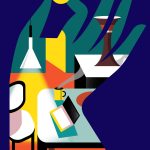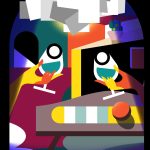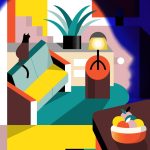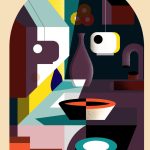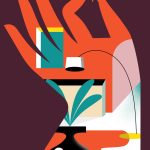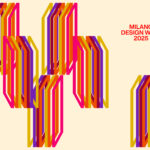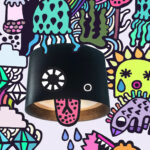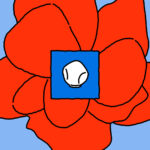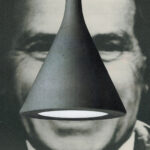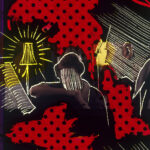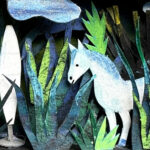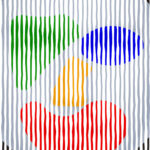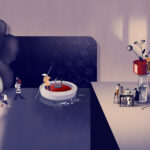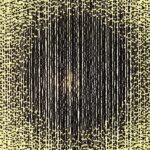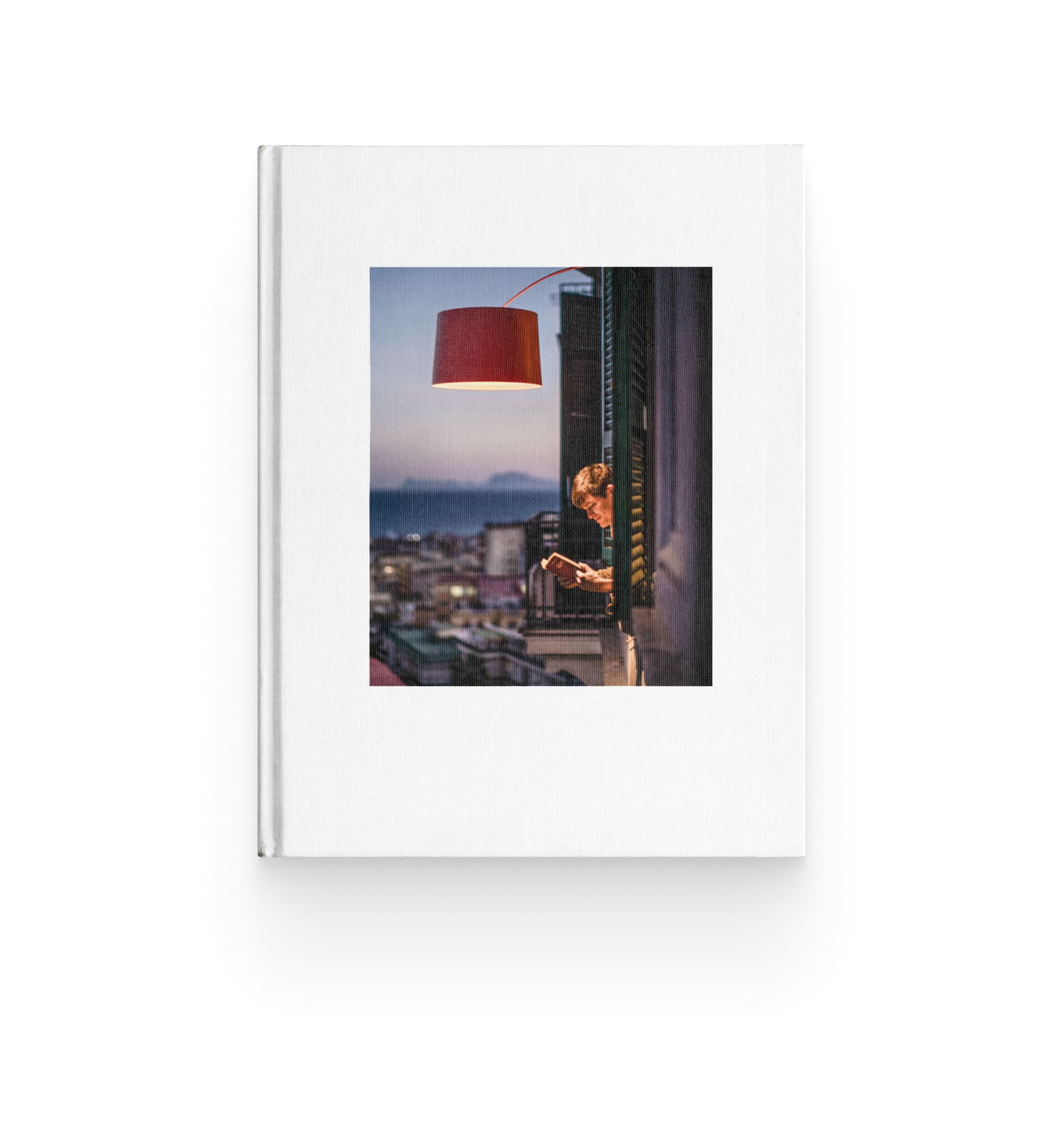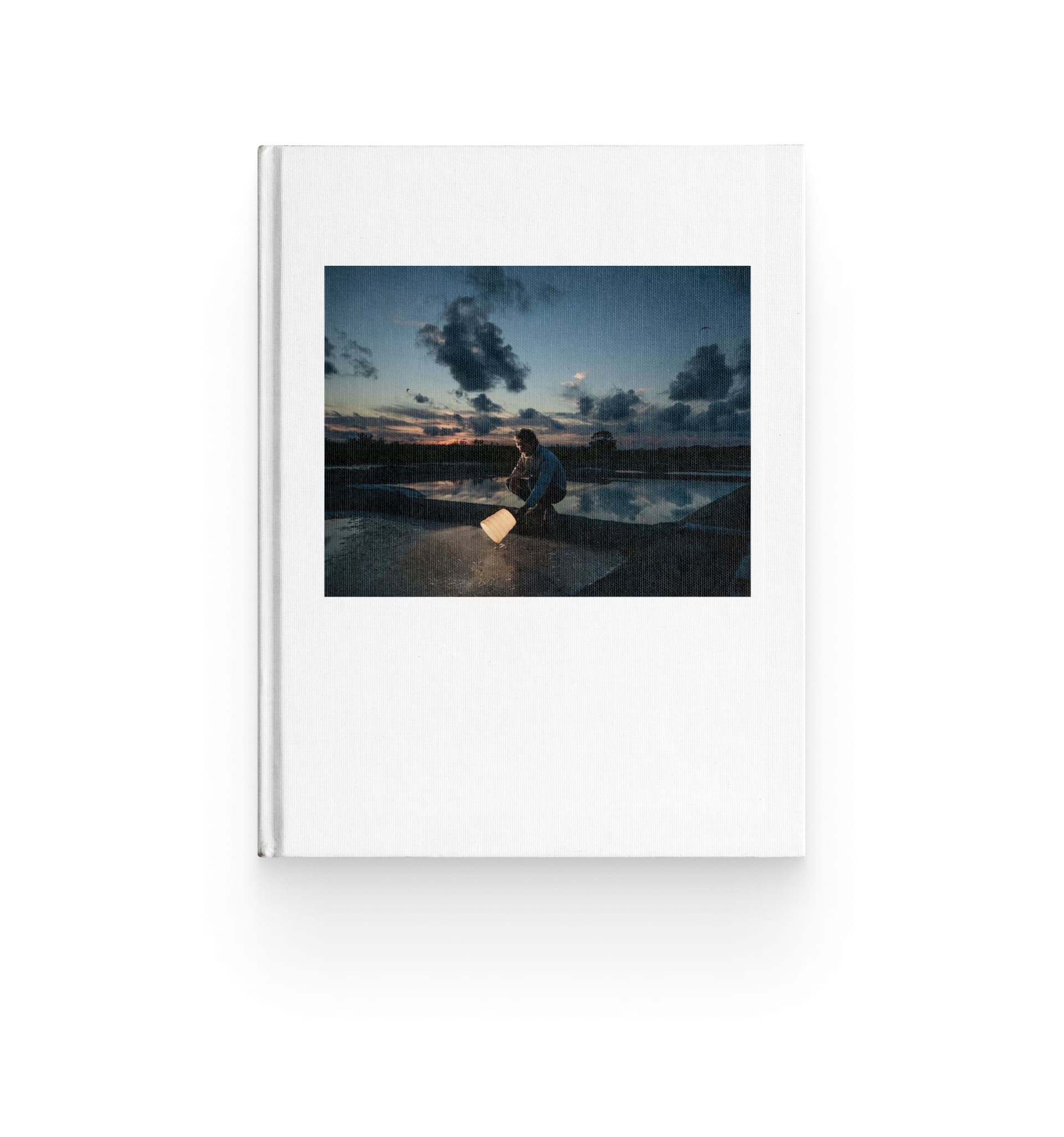Storytelling is a fundamental aspect of any visual work

Writer, illustrator and tattooist: Luca Font’s visual universe is made up of a range of different media, all with a unique distinctive style. In his series of illustrations created for Foscarini’s “What’s in a lamp?” project, Font visually depicts the role of light and of Foscarini lamps in defining a room and giving it personality.
Luca Font takes part in our latest project “What’s in a lamp?” which transforms the Instagram @foscarinilamps feed into a virtual place that offers room for well-known and emerging exponents in the world of visual arts, inviting them to “play” with Foscarini collection and get inspired by a catalogue of lamps composed by different styles, materials, and designers.
Luca Font, a writer, illustrator and tattooist, was born in Bergamo in 1977. He lives in both Milan and New York, the cradle of Graffiti Art, and his passion for graffiti marks his beginnings as an artist. From trains to walls, tattoos, paper and digital art, Luca Font’s visual universe is made up of a range of different media, all with the same transversal, distinctive style that shows a distinct preference for the abstract, for graphic design and typography. His work features a constant search for visual synthesis, as well as a graphic style that blends minimalism and expressiveness.
In his series of illustrations created for Foscarini, Font visually depicts the role of light and of Foscarini lamps in defining a room and giving it personality, both at night, when the light is turned on, and during the day, when it’s switched off. Six illustrations make up a kind of circadian cycle in which the house develops its own personality through an illusion of pareidolia.
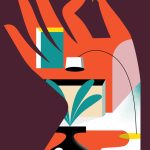
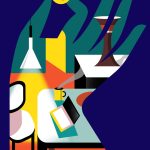
Tell us how your career as an artist began. Where did it all start? Have you always known that you wanted to do this for a living?
I started drawing as a child and focussed on graffiti as a teenager and for many years this was my main creative output. I never had any formal training in art and I’d certainly never thought about making a living out of drawing until, almost by chance, I got the opportunity to learn tattooing, which I grabbed right away. In 2008 I left the world of communication without a second thought and everything changed.
Your graphic style is very striking, recognisable and distinctive. How would you describe it and how has it evolved thanks to the experiences you’ve had?
I grew up surrounded first by video game graphics and then by skateboards. My mother taught art history, but I always preferred those powerful, evocative illustrations to altarpieces by Mantegna. This probably contributed to the same graphic approach I developed and have always had, first with graffiti and then with everything else. The goals I always set myself are to be concise, readable and immediately visually striking every time I draw something, whether it’s a palm-sized tattoo or a thirty-metre-long wall, and although I work with many different media, I always try to use a formal language that makes my output coherent.
In this project, you explored the role of Foscarini lamps in transforming space by day and night, when they’re turned on and off. Tell us a bit more about the inspiration for this series?
The most interesting part of working with a client is the opportunity to talk and, especially, to listen, which is essential for finding new angles and viewpoints. When I talked to Foscarini, the thing that emerged right away was how important light is to a space: not only nighttime light, which is obviously artificial and produced by lamps, but also light during the day, in which lamps develop a different role as design objects. So light (or rather lights) and Foscarini lamps become two elements that -depending on the time of day – help define the personality of the home in different ways, which is in turn a reflection of the personality of the people who furnish it and live there.
Are there objects that make you feel at home, wherever you are?
I’ve been travelling constantly over the last ten years and what makes me feel a bit closer to home every time are the cameras I always take with me. In a way they’re a bridge between where I am and where I’ll go back to, taking a piece of each journey with me.
What do you think of Foscarini? How was it working on this project with the company?
I felt in tune right with the company right from the start because its philosophy revolves around individuality and personality, which are the same concepts my work is based on. Each individual piece is a project in itself. I don’t believe in standard solutions because I’m convinced there’s a need to be constantly updating and doing research, both aesthetic and conceptual.
What inspires you and how do you develop your creativity?
I have some very varied, often almost random, sources of inspiration. I draw on research but also on everyday life: we’re so used to being surrounded by visual stimuli that we generally don’t pay attention to what we see, but in most cases the best thing to do to find the right idea is to stop drawing and look around while you wander aimlessly.
What’s your creative process?
It depends a lot on what I have to do. I often develop ideas by letting them sit in the background while I do something else, then I sketch very rough drafts on paper that I later process digitally and eventually transfer back onto paper or canvas. I work more and more exclusively for digital media, but producing physical artwork is still my favourite.
What’s your favourite thing to draw?
Definitely architecture and angular objects.
Which illustration, or illustrations, do you like most in this series and why?
In reality I enjoyed not so much doing one illustration, as the fact that I had the opportunity to create a symmetrical series portraying the cycle of day and night with six subjects spread over two lines. Storytelling is a fundamental aspect of any visual work and aesthetics should never be an end in itself.What does creativity mean to you?
I think it’s definitely an organic process that’s impossible to separate from everyday life.
